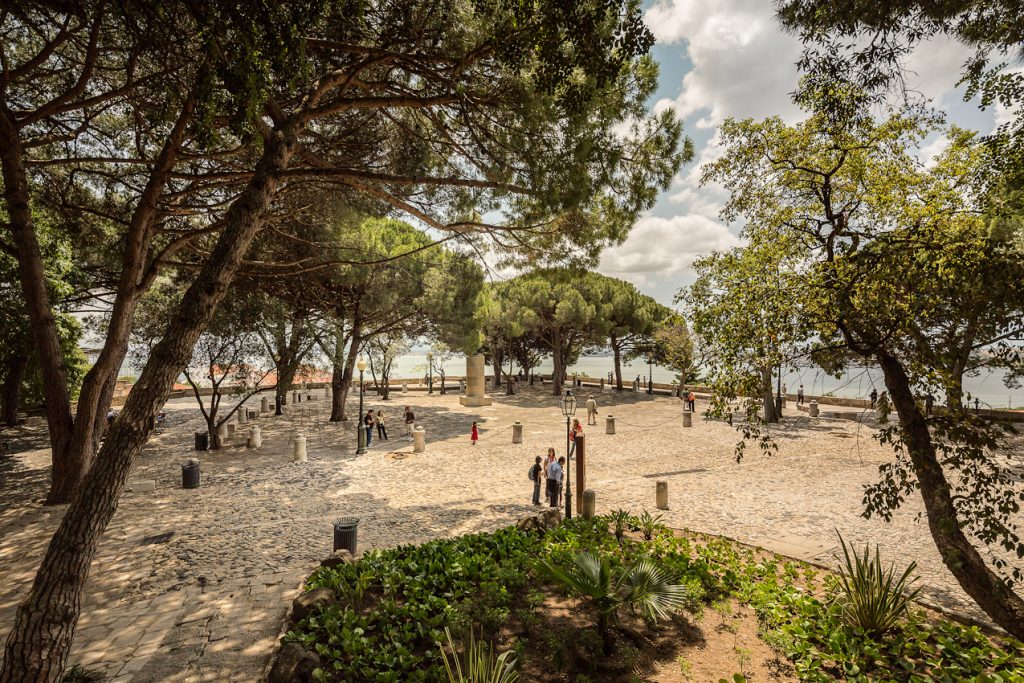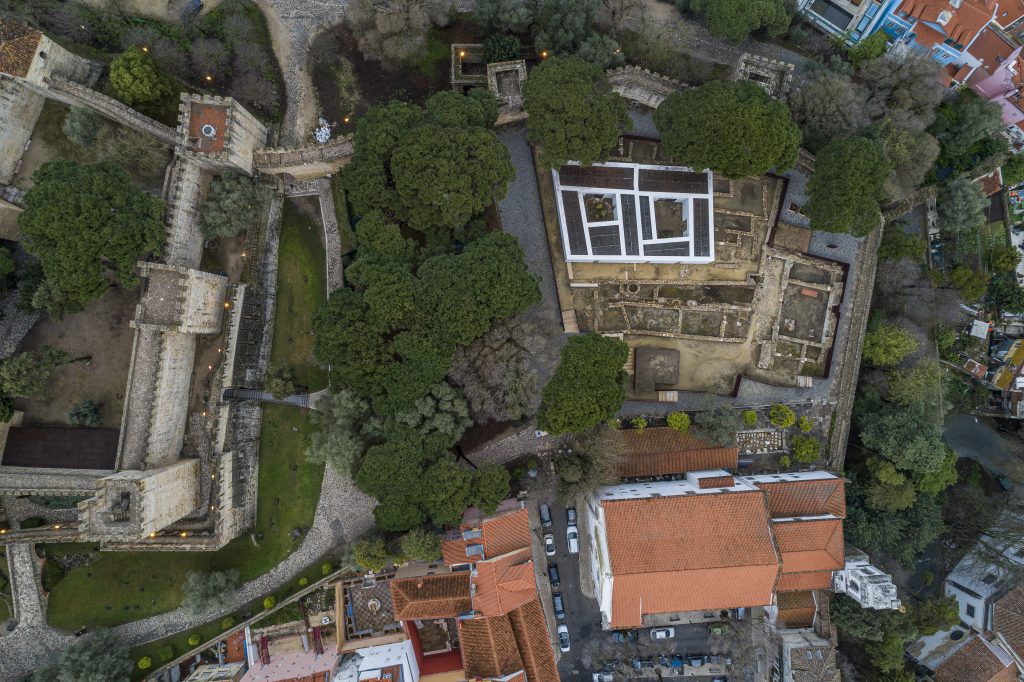The Squares
Within the perimeter of the monument there are two squares: to the south is the main one, the Place-of-Arms and the other, to the east, is called Praça Nova (New Square).

©Fernando Guerra
This walled area was an enlargement of the Citadel to the south and was built in the 16th or possibly the 17th century.
The paving of the Place-of-Arms took place in the late-19th/early 20th century in the area close to the walls where the artillery was positioned, to facilitate the handling and movement of cars (for repairs). The rest of the area remained with a dirt or grass surface until the 1960s.
This square boasts one of the most beautiful views over the city of Lisbon and the river Tagus.

© Sergiy Scheblykin
Located at the easternmost part of the monument and delimited by a series of walls, evidence of how it was constructed suggests it dates back to the earliest stage in the fortification’s history.
In the northeast corner is the first section of the New or Fernandine Wall.
The Praça Nova is also home to an area of pine forest and the archaeological area (the Archaeological Centre). Here the oldest traces of human occupation were identified, dating from the Iron Age (7th century BC until the arrival of the Romans), as well as material evidence from an early Roman occupation (dating from the republican period until the final years of the Western Empire); important residential structures associated with a significant collection of pieces from the Islamic period (11th and 12th centuries); and remains of a modern palace which made use of foundations from the medieval period that have been identified as belonging to the old Paço dos Bispos (Bishops Palace), built by Dom Afonso Henriques, the first king of Portugal.
